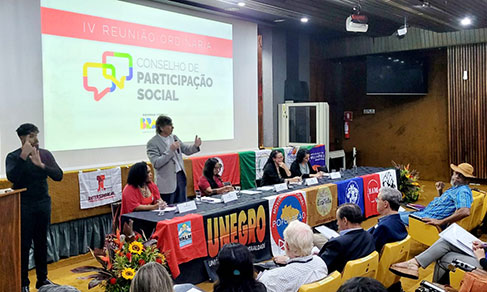Retratos Magazine
IBGE presents the colors of inequality
May 11, 2018 02h00 PM | Last Updated: June 05, 2018 11h02 AM
Color or race statistics produced by the IBGE show that Brazil is still far from becoming a racial democracy. On the average, white persons have the highest salaries, face less unemployment and are the majority among higher-education students, for example. Socioeconomic indicators for the black and brown population, as well as those on the Indian population, are more disadvantageous.
According to Professor Otair Fernandes, PhD in Social Sciences and coordinator of the Laboratory for Afro-Brazilian And Indian Population Studies of the Federal University of Rio de Janeiro (Leafro/UFRRJ), the reality in Brazil is still a legacy from the long period of European colonization in Brazil, and from the fact that we were the last ones to have slavery abolished.
The professor also highlights that, even after 130 years of abolition, it is still very hard for the black population to clim the economic ladder in Brazil. "Slavery is a historic landmark. During that period, the black population was not even considered human. And, after so long, there have not been projcets aimed at black insertion in society. Even after beeing freed, black men and women were left abandoned to their fate. So, Brazil will be structured upon what we call institutional racism", he recalls.
Fernandes says that individual actions are not enought to break social and historical barriers, and highlights the importance of affirmative actions of public policies. “There must be policies aimed at the black population, promoting the appreciation of once excluded and segregated peoples."
Public prosecutor from the state office of Bahia, Lívia Santana Vaz, says acknowledging that the problem exists is the first step towards the resolution of this historical debt. In this respect, the investigation of color or race issues by official surveys produced by the IBGE is of fundamental importance. "There are countries - Portugal, for example - that, use argument of not violating the principle of equality, do not allow data collection based on peoples color or race. That has prevented knowledge about the context of racial inequality and the subsequent creation of related public policies”, highlights the prosecutor who is engaged in the protection of human rights and in the fight against discrimination. 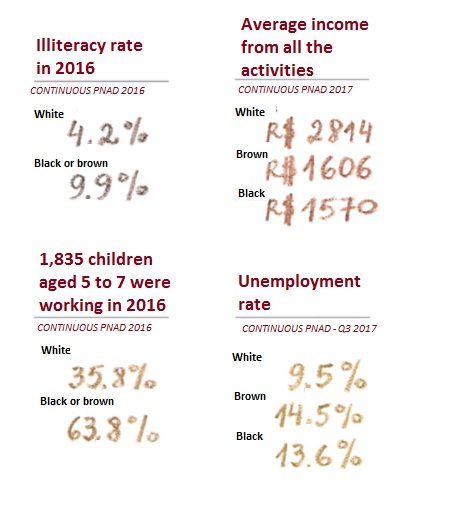
What defines you?
Is your color or race white, black, yellow or Indian? That is the order used by the IBGE enumerator to provide the options, so that the interviewee chooses what group he fits in. What elements they consider to answer that question is a private matter, since the color or race question is based on self identification.
According to Leonardo Athias, researcher from the IBGE's Department of Population and Social Indicators, and responsible for this segment, that is a basic human right: "an individual's identification is their responsibility, and it is a social interaction, a perception about themselves and the other. I cannot classify someone else, mainly because that has been done before in order to segregate, to persecute."
The classification system adopted by the Institute is based on five categories, consolidated in a long tradition of household surveys, but it is also subject to criticism.
One of the complaints is that the system has been in effect since 1872, having only been slightly changed throughout the years, but always using categories formulated by an elite and not considering reality outside the South and Southeast Regions. That has created w lot of difficulty with the term "brown", for instance. That terms refers to the original miscegenation of black or Indian origin with any other color or race. Some black movement advocates use black and brown to replace black and some Indian-defense movements use Indians and brown to highlight the Indian descendancy. That is a residual category, but it comprises the majority”, explains Marta Antunes, from the Technical Office for the Population Census.
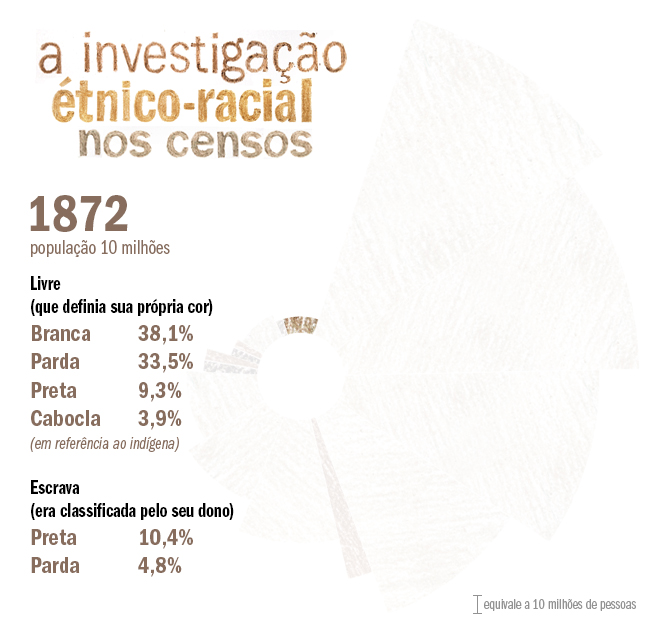
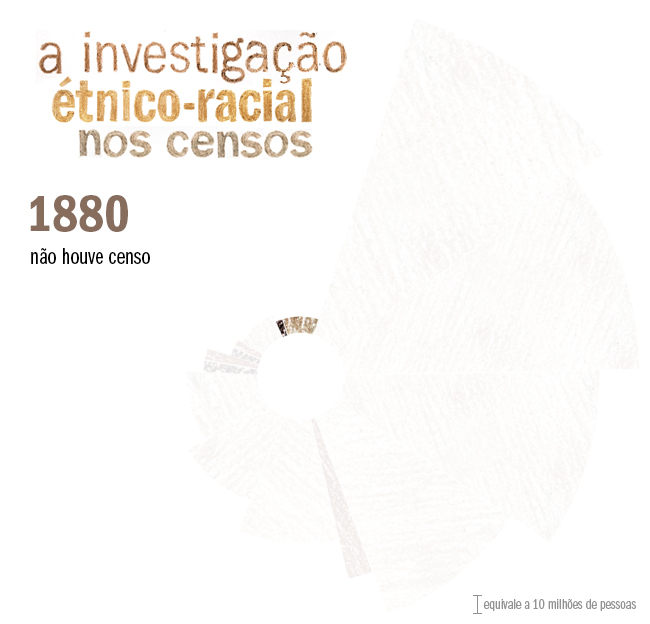
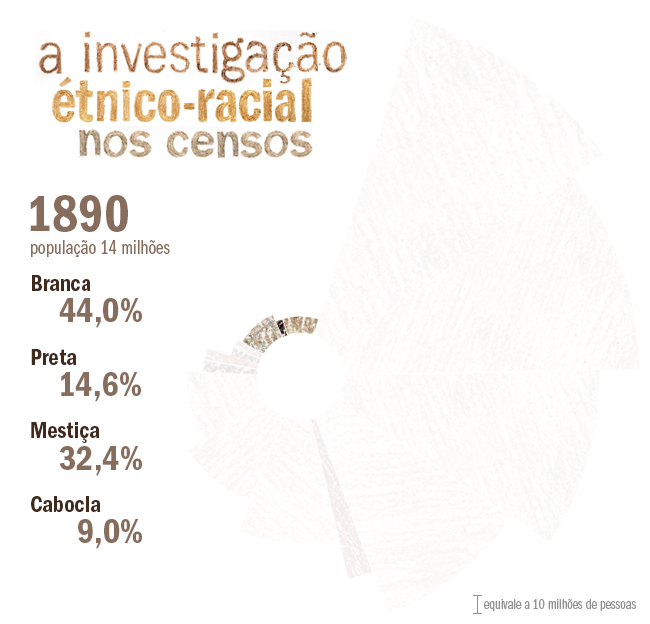



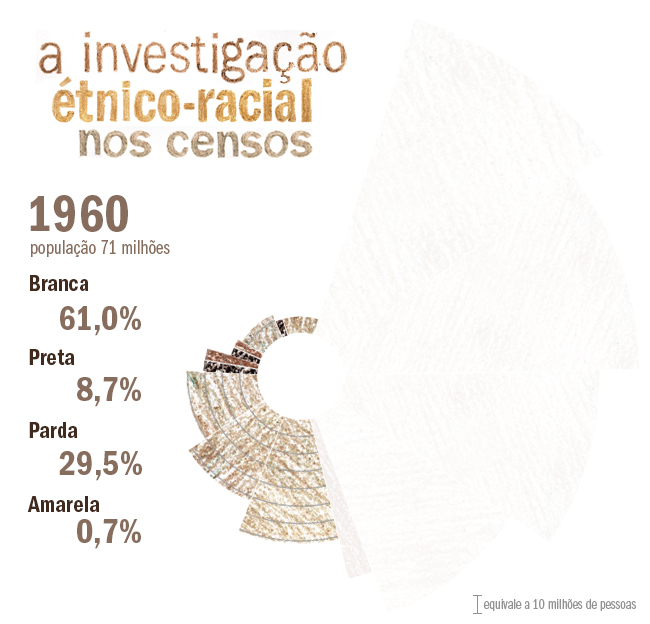


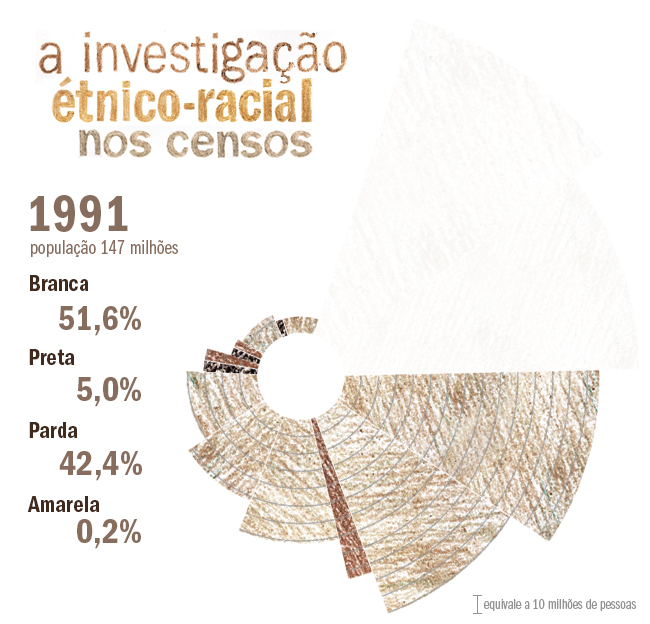
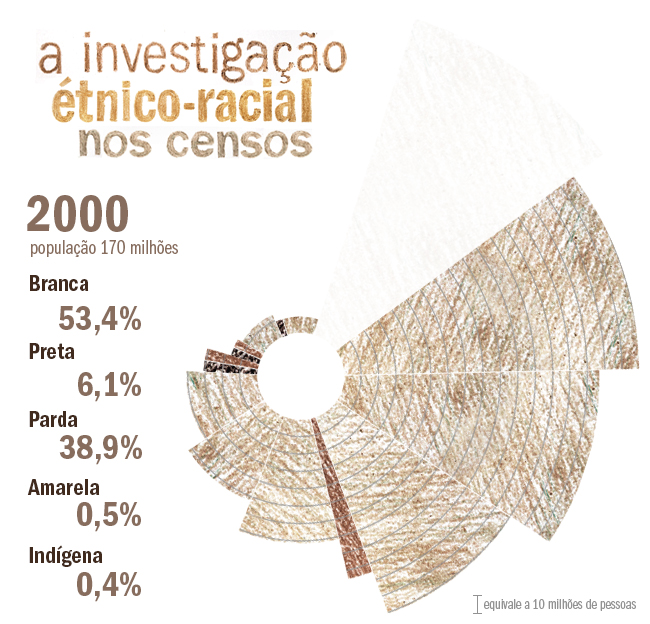
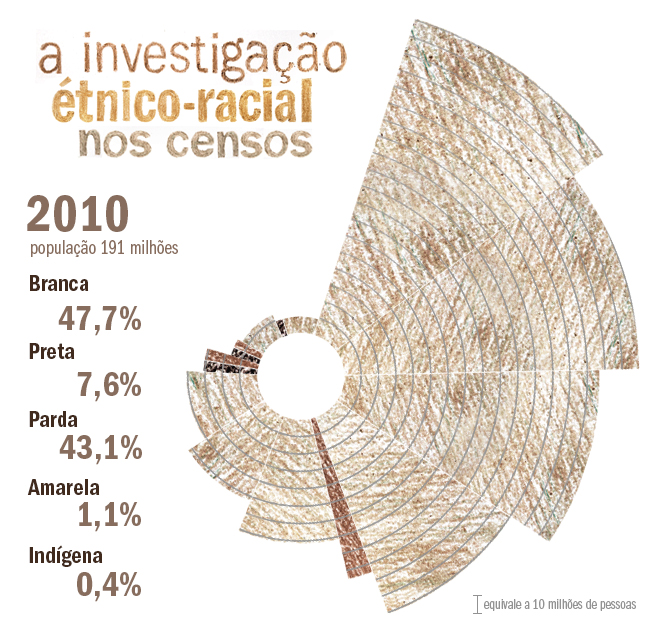
Anyway, these groups have succeeded in evidencing racial inequality in the social indicators of Brazil. “Every classification is a simplification of reality. Many times the objective of classification in order to fulfill state demands of protecting minorities, showing inequalitites and organizing policies, may not coincide with the objective of showing how people see diversity itself'', says Leonardo.
According to Marta, the categories can be reconsidered, but there is still no consensus to replace them: "how can we change these categories without losing our time series or causing trouble to the public policies already established that were based on these terms?" she asks.
More on this topic can be found at Retratos Magazine no. 11.




